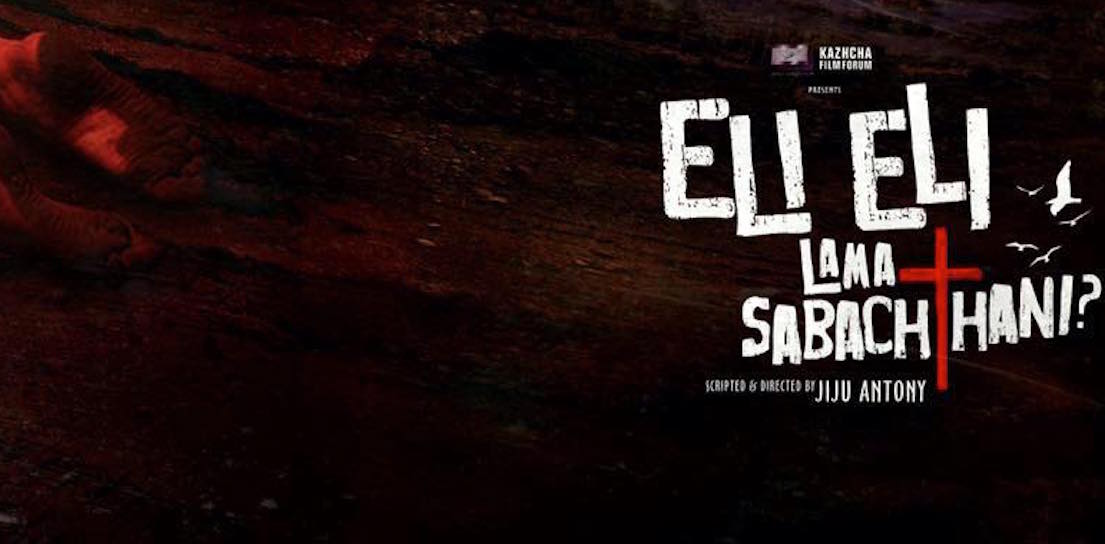Film Bazaar lets you reach out to a larger audience at a nominal cost: Jiju
A few filmmakers choose to step out and say stories against the stream, exploring the why behind the what, visibly dark in the milieu they choose.
Jiju Anthony’s multi-lingual Eli Eli Lama Sabachthani? is one such venture. He talks to Pandolin about the journey that his protagonist undertakes and its resonance in the society of today.

Jiju Anthony
Tell us something about the film. What was your inspiration behind it?
If we dig back even a few months ago in our memory, we would find so many instances of rape, of murder, and so many other crimes that are happening all over the country. I am originally from Kerala and we have had some high-profile rape cases back there. Only when there is a considerable amount of violence involved, do these cases get attention, otherwise there are so many of them that don’t even get reported. That is one aspect of the society that I witness every day.
And then there is another aspect. I have a small son and so many of his friends. They are so adorable and loving that I can vouch for their innocence. I look at them and wonder, can kids like these ever grow up to be criminals? If they remain the way they are, there is no way they can commit the grievous crimes some parts of our society are witnessing. But the truth is that some of them do grow up to become violent.
This means that there is something going wrong in between. No one is a born criminal. There is something happening in the society that is leading them there. And that is what I wanted to discover. Hence I picked up one such individual and followed their life, to figure out what happens in a typical scenario like this. The films starts with the funeral of this person who has committed the crime, and then we go backward into his life to see what got him there.
READ: CRIME DRAMA AND THE RISE OF THE GANGSTER IN HINDI CINEMA
How does the backdrop contribute to the film? Is there a specific reason why you chose to place the story in Bombay?
If you go to see, the film could have happened anywhere in the country. But when it comes to a metro, everything comes under one roof. Whether it is poverty, or lack of education, or the niches. In the same geographical arena, you have different strata of society living together. For example, if I pick up a scene that I shot in Bandstand at Bandra, I could see Shahrukh Khan’s residence, and the slums around the sea shore in the same place. So, I was sure that the film had to be based in a metro to exactly portray the social milieu, and I considered different cities for that; but it was easiest to do it in Mumbai.
How has your experiment with colour turned out in the film? Also, what are the challenges of working with so many colour tones, including black and white?
It was more of an advantage I would say, as opposed to a challenge. There were technical barriers of course since I am not really an expert as such, and I am not from the background of cinematography, but it was an advantage because I had to portray so many different time periods. The life of the lead character spans across almost 25 years. So in that sense, color made it easier to transport the audience to a different age while they stayed with the same story.
READ: REINVENTING BLACK AND WHITE WITH MASTER CINEMATOGRAPHER SANU VARGHESE

Poster of Eli Eli Lama Sabachthani?
What would draw the audience to your film? What genre do you think it falls into?
The genre is drama. But more than that, the film is very realistic in its setting. For example, if there is a scene where there are a set of characters who are traveling in a taxi, it is shot in a way that you will feel that it is shot in a taxi. We have shot mostly in real locations, the dialogues are said in a very ‘everyday’ language, and it all looks like it is around you. And that is how it is multi-lingual. Because in a city like Bombay, you speak differently depending on who you are speaking with. Even a native Marathi speaker must talk in Hindi at certain places or situations. So in a cinematic language, the genre is drama, but it is realism in the film that I expect to draw the audience with.
READ: REALISM, RELATIVITY AND EFFECTIVITY ARE WHAT DRIVE A WEB SERIES
The Industry Screenings section is an inherently important distribution platform at Film Bazaar. How do you expect it to help your film?
Film Bazaar is a very important connecting point in terms of introducing you to a varied international audience including film festivals and buyers along with a lot of distributors and producers that come over. For a film like ours that is very important because once a film gets a break through, it can then go ahead and survive on its own merit. But that break is very important. Ours is in fact a crowdfunded movie. And we have reached this stage with that money. But after this point it tends to get difficult since we barely have any funds left for marketing. So Film Bazaar in that sense gives you the opportunity to reach out to a larger audience at a nominal cost.



